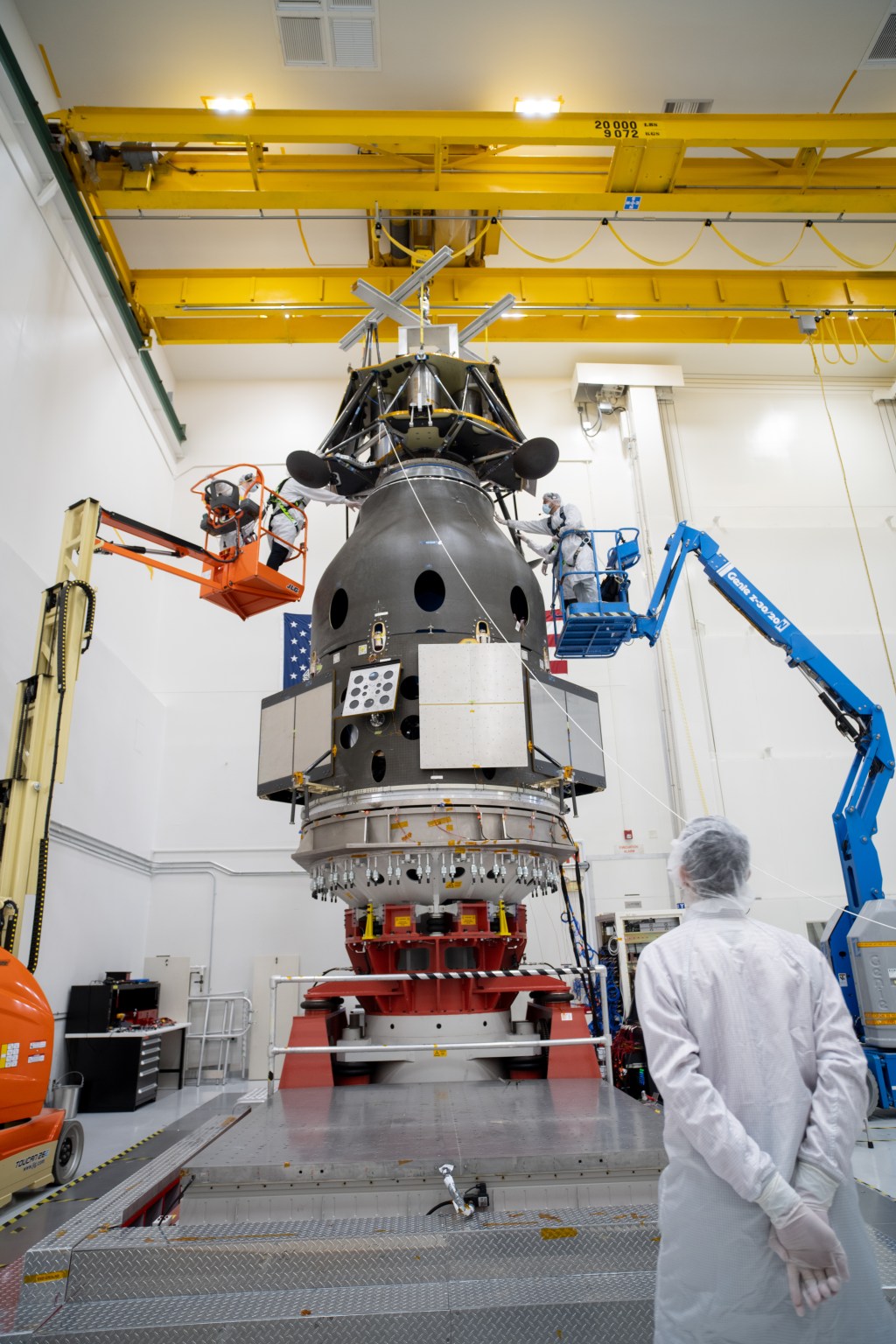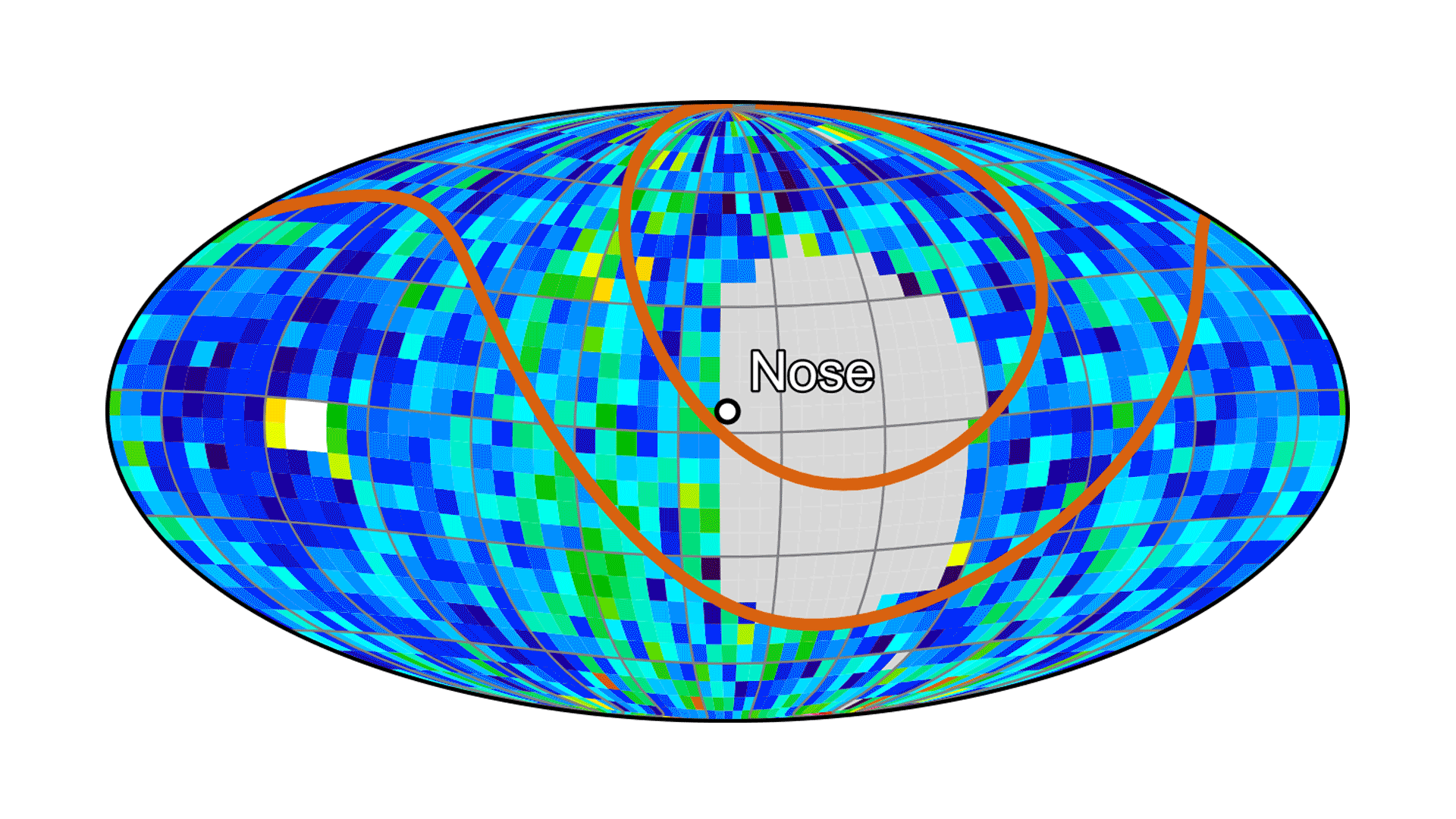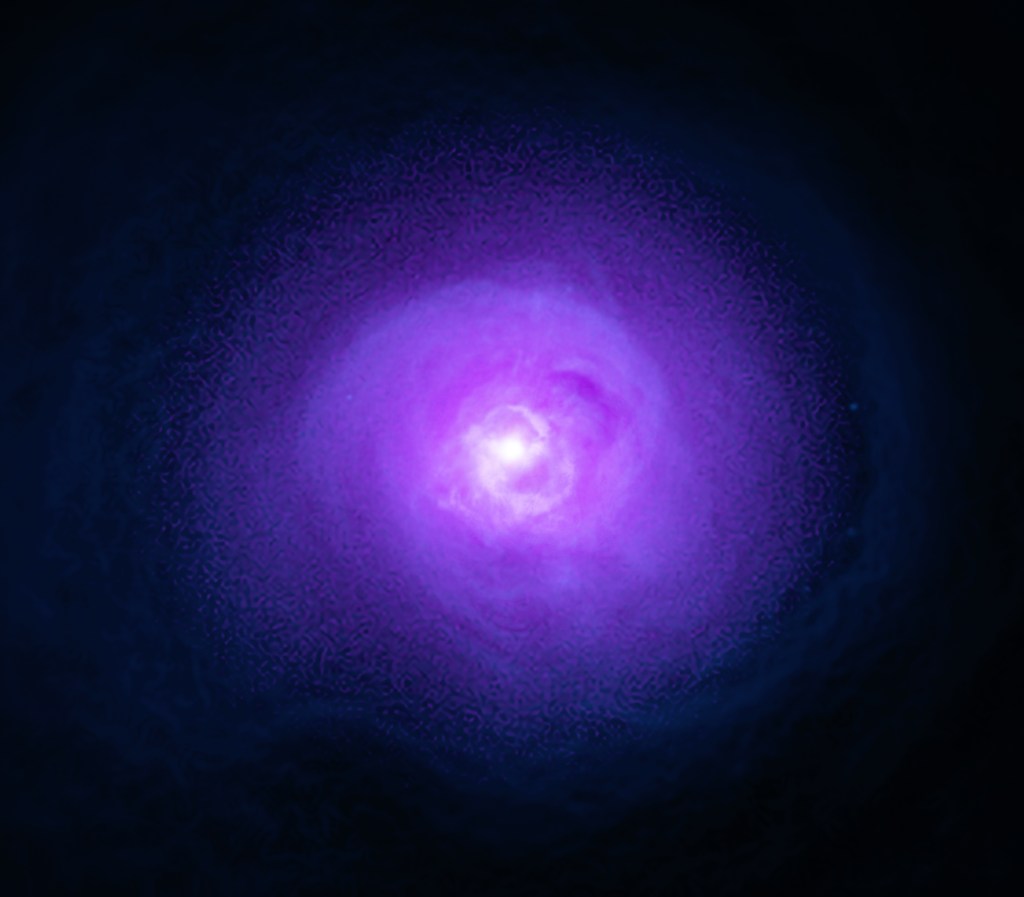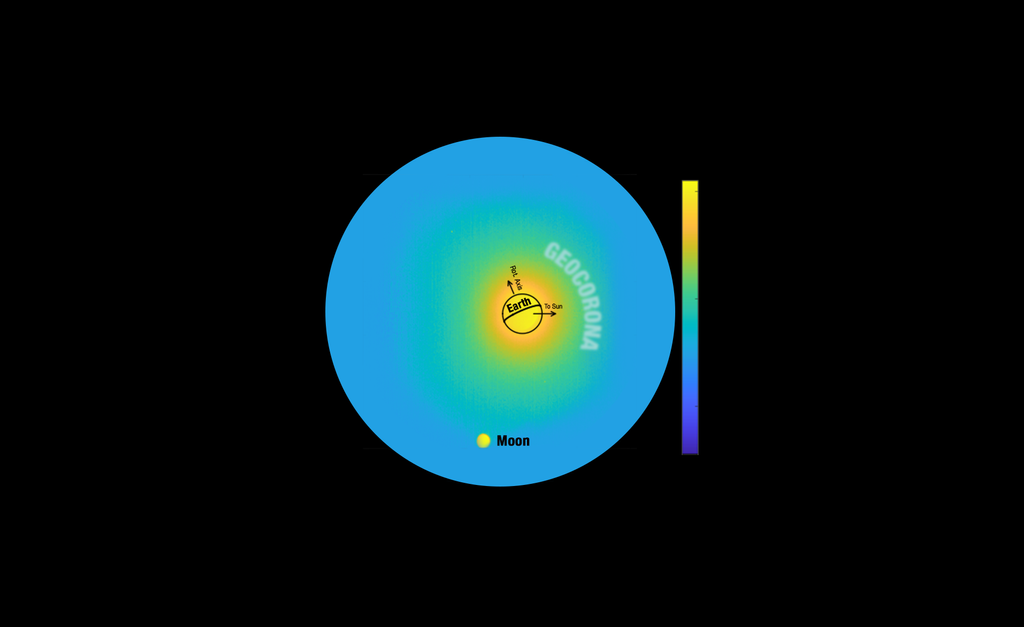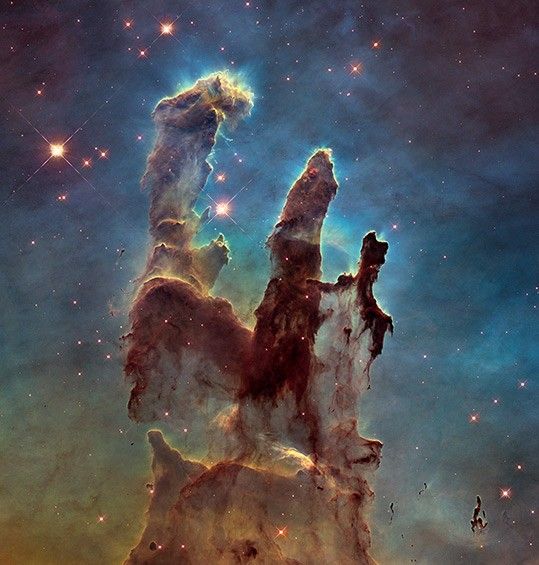1 min read
Runaway Black Hole Compass Image

This compass image shows a Hubble Space Telescope archival photo which captures a curious linear feature that is so unusual it was first dismissed as an imaging artifact from Hubble’s cameras. But follow-up spectroscopic observations reveal it is a 200,000-light-year-long chain of young blue stars. A supermassive black hole lies at the tip of the bridge at lower left. The black hole was ejected from the galaxy at upper right. It compressed gas in its wake to leave a long trail of young blue stars. Nothing like this has ever been seen before in the universe. This unusual event happened when the universe was approximately half its current age.
Extended Description and Image Alt Text
Extended Description
Image titled “Runaway Black Hole Near RCP28.” The Hubble Space Telescope photograph of a curious linear feature on a black, deep-space field speckled with white, yellow and reddish galaxies and one, lone, star. The photograph is overlaid with a color key, scale bar, and compass arrows. Two, white-bordered boxes appear on the image—a small box in the center and a larger box to the right, which contains a magnified view of the contents of smaller box. Both boxes showcase the feature, a long, thin, diagonal streak of whitish-blue stars. The line of stars is connected to the irregular galaxy that appears at the top, right corner of both boxes. In the magnified view, a white knot appears prominently at the left, lower side of the diagonal streak of stars. At the top left of the image, below the title, is the label HST ACS, which indicates the Hubble instrument used. Below that is a color key showing which filters were used to create the image and which color was assigned to each filter. F 606 W is blue and F 814 W is orange. At the lower left is a scale bar. On top of the bar is the label “20 arcseconds.” Below the bar is the label “200,000 light-years.” The width of the scale bar is about one-sixth the total width of the image. At the bottom right are compass arrows indicating the orientation of the image on the sky. The north arrow points up and the east arrow points to the left.
Image Alt Text
A Hubble photograph of a curious linear feature on a deep-space field. The photograph is overlaid with a color key, scale bar, compass arrows, and two, white-bordered boxes showcasing the feature.
About the Object
- R.A. PositionR.A. PositionRight ascension – analogous to longitude – is one component of an object's position.40:25:51.30
- Dec. PositionDec. PositionDeclination – analogous to latitude – is one component of an object's position.-08:20:46.26
- ConstellationConstellationOne of 88 recognized regions of the celestial sphere in which the object appears.Ophiuchus
- DistanceDistanceThe physical distance from Earth to the astronomical object. Distances within our solar system are usually measured in Astronomical Units (AU). Distances between stars are usually measured in light-years. Interstellar distances can also be measured in parsecs.7.669 billion light years (z=0.964)
- DimensionsDimensionsThe physical size of the object or the apparent angle it subtends on the sky.Image is about 2.4 arcmin across (about 1.4 million light-years)
About the Data
- Data DescriptionData DescriptionProposal: A description of the observations, their scientific justification, and the links to the data available in the science archive.
Science Team: The astronomers who planned the observations and analyzed the data. "PI" refers to the Principal Investigator.The HST observations include those from program 16912 (P. van Dokkum)
- InstrumentInstrumentThe science instrument used to produce the data.ACS
- Exposure DatesExposure DatesThe date(s) that the telescope made its observations and the total exposure time.September 5, 2022
- FiltersFiltersThe camera filters that were used in the science observations.F606W, F814W
- Object NameObject NameA name or catalog number that astronomers use to identify an astronomical object.RCP28
- Object DescriptionObject DescriptionThe type of astronomical object.Runaway supermassive black hole
- Release DateApril 6, 2023
- Science ReleaseHubble Sees Possible Runaway Black Hole Creating a Trail of Stars
- CreditNASA, ESA, Pieter van Dokkum (Yale); Image Processing: Joseph DePasquale (STScI)

These images are a composite of separate exposures acquired by the ACS instrument on the Hubble Space Telescope. Two filters were used to sample wide wavelength ranges. The color results from assigning different hues (colors) to each monochromatic (grayscale) image associated with an individual filter. In this case, the assigned colors are: Cyan: F606W, Orange: F814W
Related Images & Videos
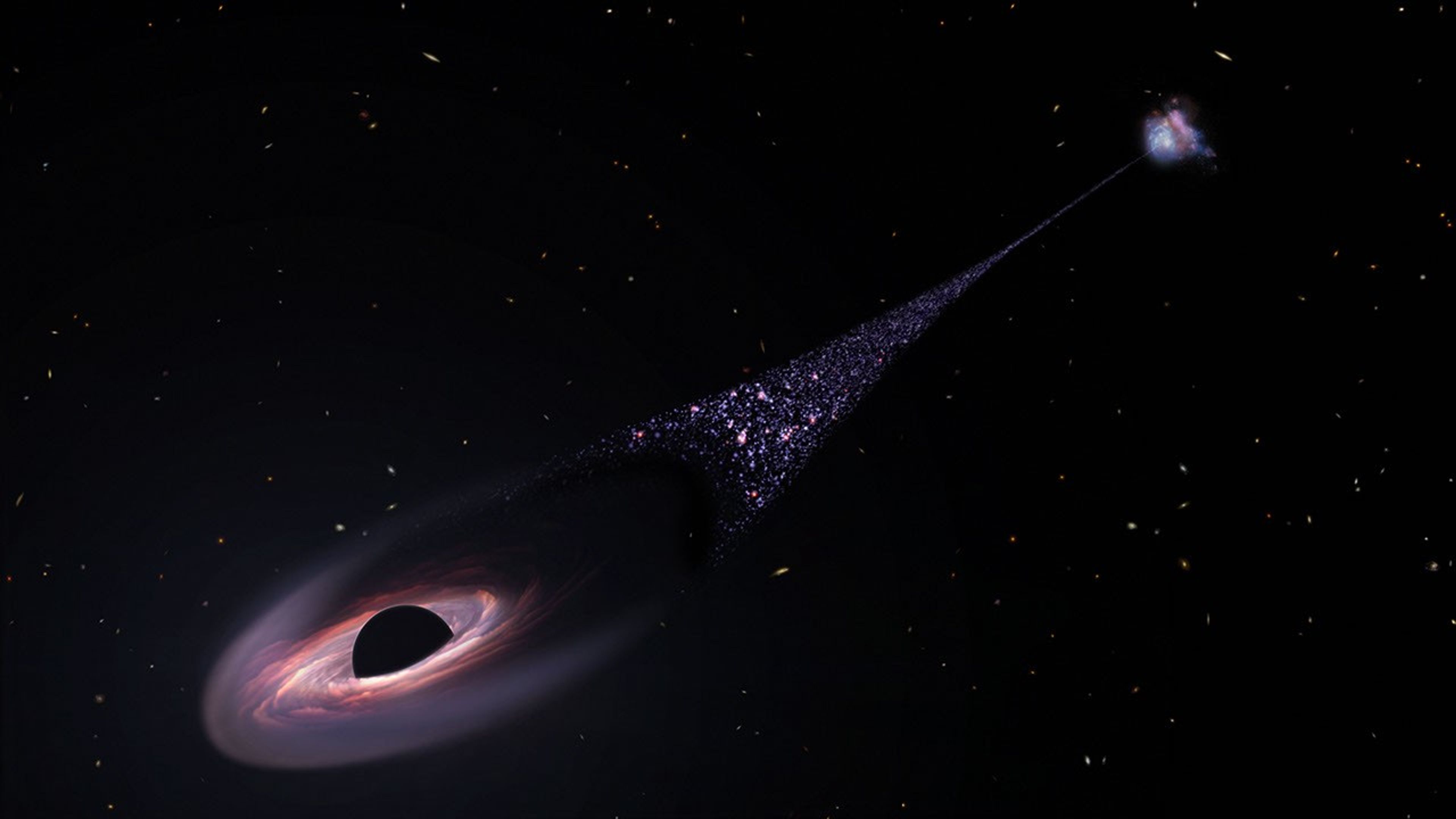
Runaway Supermassive Black Hole Illustration
This is an artist's impression of a runaway supermassive black hole that was ejected from its host galaxy as a result of a tussle between it and two other black holes. As the black hole plows through intergalactic space it compresses tenuous gas in front to it. This precipitates...

Runaway Black Hole Near RCP28
This Hubble Space Telescope archival photo captures a curious linear feature that is so unusual it was first dismissed as an imaging artifact from Hubble's cameras. But follow-up spectroscopic observations reveal it is a 200,000-light-year-long chain of young blue stars. A...
Share
Details
Claire Andreoli
NASA’s Goddard Space Flight Center
Greenbelt, Maryland
claire.andreoli@nasa.gov











